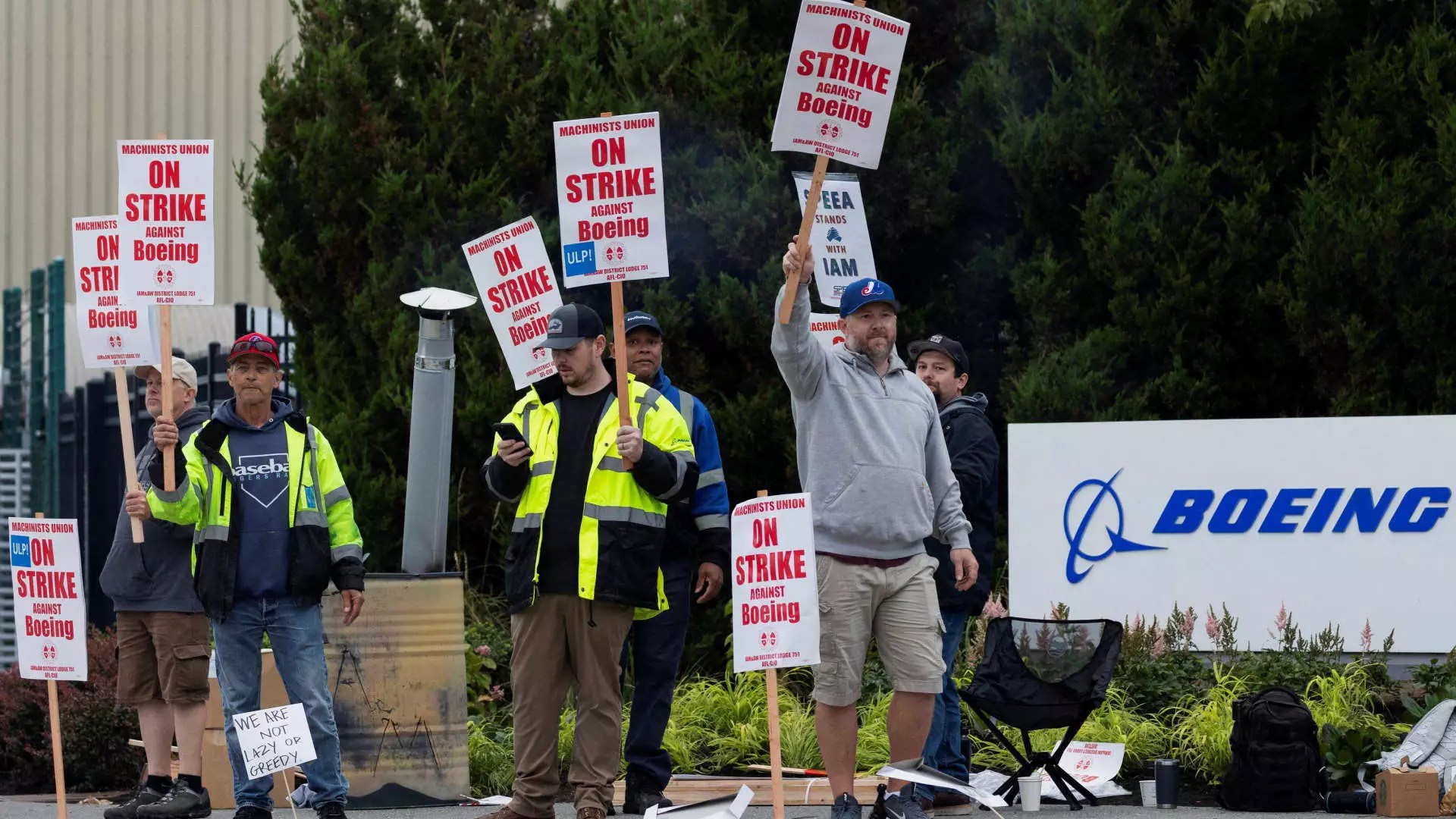In Renton, Washington, a brewing storm is reshaping the air travel landscape as Boeing machinists launch a significant strike demanding better pay and conditions. At the core of this labor movement lies a deep frustration among workers regarding the rising costs of living coupled with stagnant wages, especially amid a time of soaring inflation and increased job competition in the aerospace sector. This situation paints a vivid picture of the hardships faced by these skilled workers, who are now resorting to alternative employment options in order to weather the financial storm brought on by their work stoppage.
With approximately 30,000 machinists walking off the job, the situation has escalated quickly since the strike began two weeks ago. As the clock ticks, union members are faced with daunting choices regarding how they will support themselves and their families. Many are contemplating side jobs, including landscaping and furniture moving, demonstrating the sacrifices workers are making to support their families while they fight for better wages. These examples highlight the precarious balance that workers must strike between fulfilling their immediate financial needs and standing up for their rights in the long term.
Boeing, a company with a historical reputation for innovation, now finds itself in a precarious financial position. The ongoing strike comes on the heels of a substantial financial crisis that has seen the aerospace giant record losses upwards of $8 billion this year alone. The faltering demand for its aircraft, exacerbated by manufacturing delays and safety concerns, has made the situation even more dire. Importantly, the company’s debt has swelled to $60 billion, and a prolonged strike could push Boeing closer to a downgrade from rating agencies, resulting in higher borrowing costs and further complicating its recovery efforts.
Current negotiations have revealed that Boeing’s management has offered wage increases falling short of the workers’ demands, igniting further tensions and animosity between both sides. The company’s recent proposal, while it could be considered a positive move, has largely failed to alleviate the urgent concerns of the workers, particularly in light of the exorbitant cost of living in the Seattle area. This highlights the increasing disconnect between corporate negotiation strategies and the frontline realities faced by workers.
The atmosphere on the picket line reveals much about the collective spirit of the striking workers. In a show of solidarity, union supporters have mobilized to provide essential goods and support to those who are standing on the front lines. Large supplies of bottled water and homemade meals signal a community effort to aid those enduring challenging conditions during the strike. Such scenes not only serve as a reminder of the workers’ commitment to their cause but also showcase the profound sense of camaraderie that often unites labor movements.
Testimonies from workers underscore the emotional stakes involved in their fight. For many machinists, the decision to strike reflects not just a quest for higher pay but a desire to reclaim dignity in their work. The pride taken in building airplanes is evident in their voices, showcasing a commitment to their craft that runs deep. Yet as inflation and increased utility and housing costs grip their lives, the necessity of financial security continues to loom large.
The ongoing labor strife at Boeing has drawn attention beyond the factory gates, with government officials weighing in on the need for resolution. Transportation Secretary Pete Buttigieg has expressed hope for mutual agreement, emphasizing the importance of finding a solution that benefits both the workers and the company. The involvement of federal officials in these negotiations reflects a recognition that the outcomes of this strike extend beyond Boeing and its employees—they carry potential ramifications for the wider economy, especially in a market where skilled labor remains scarce.
Significantly, Boeing’s struggles are compounded by changes wrought by the pandemic, with thousands of workers lost and a slow, challenging recovery in hiring practices. The company’s historical reliance on a skilled workforce remains at odds with present realities, where both labor and management must navigate an intricate labor market fraught with competition.
As the Boeing strike unfolds, both the company and its workers stand at a critical juncture. The need for compromise is evident; however, the ideological divides remain vast. As pressures mount on both sides to reach a mutually beneficial agreement, the outcome will likely shape not only the future of Boeing but also set a precedent for labor relations across the wider economy. Workers’ rights, corporate profitability, and economic health are intertwined in this pivotal moment, reflecting a broader narrative about the role of labor in an ever-evolving economic landscape. The coming days will determine whether this moment of growth for workers or a deepening crisis for the aerospace giant will prevail.


Leave a Reply